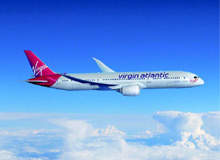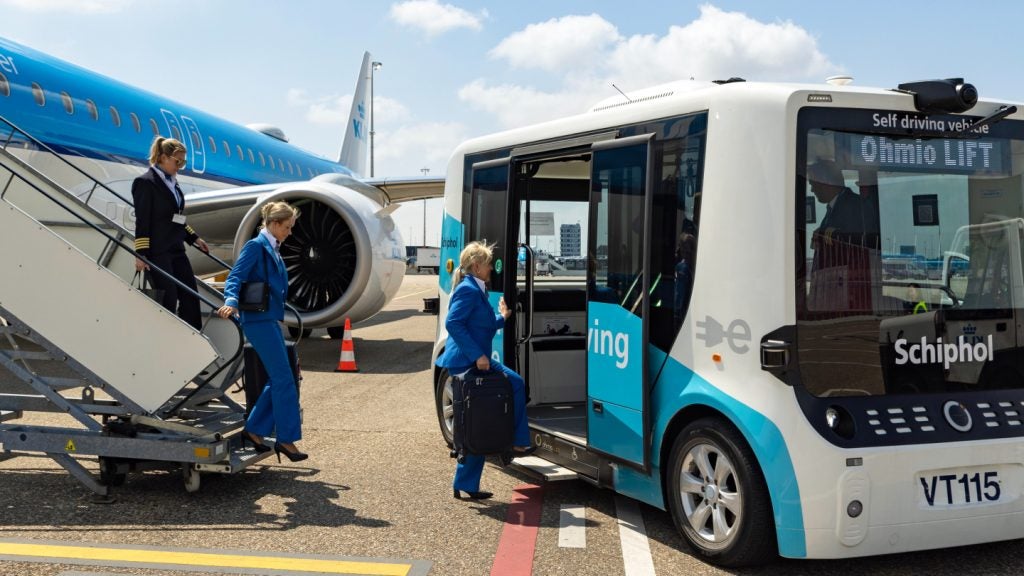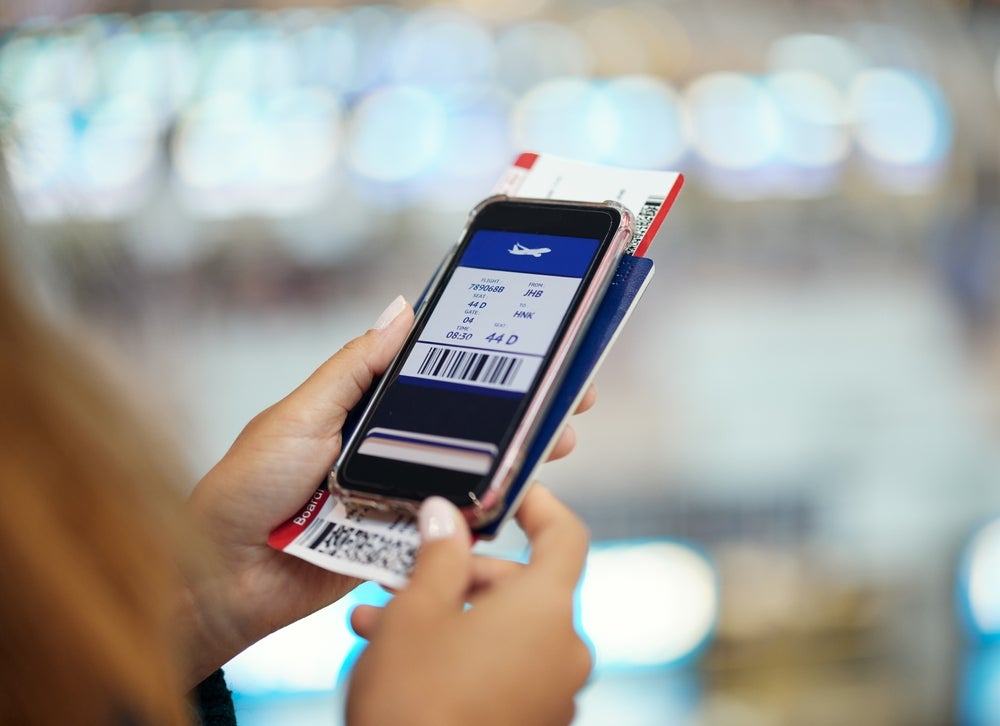
Virgin currently flies out of the UK to ten US destinations. The most recent addition, the Chicago service restarting this year, had been suspended in a cost-cutting exercise in the wake of the 9/11 attacks. The carrier also cut the Athens and the then-new Toronto services and neither have so far been renewed.
Virgin’s general manager for airline planning, Edmond Rose, says the post-Open Skies strategy will be to go for new routes from existing US destinations to Europe. But where in Europe? “I cannot say much more than that we are looking at major European destinations,” he explains. “We are not looking at small secondary cities. We are looking to serve major European cities from major cities in the US. If you look at Virgin’s route strategy, from the word go we have always tended to start routes where there is strong demand. We have not tried to create demand, except on the leisure side of the business, where we have gone into markets that were underserved.”
Paris and Frankfurt have to be top of the shopping list, with New York and San Francisco attractive US ends. Rose’s close-knit team of eight route planners may also be looking at Las Vegas as an ex-EU destination. This is a route where Rose accepts that Virgin has actually created a market.
MARKET CREATION
“There was very limited demand for non-stop flights to Las Vegas before we went into it in 2000,” he claims. “We started with a very low frequency. At that time there was also very little in the way of UK charter activity to Las Vegas and no direct UK flight. No US carrier was serving it directly either, though obviously they were offering connections. We ourselves had been flowing traffic to Las Vegas via our existing routes to San Francisco and Los Angeles. Now, over time we have built up the direct Las Vegas route to a daily 747 service.”
Being able to create a market is rare, says Rose and is more likely to be possible on leisure than on business travel. It has been pointed out, however, that Las Vegas has a large convention business alongside its gambling activities. The only similar example is the Havana route, which Virgin started in 2005. British Airways had tried and abandoned the service, but in Rose’s view this was less market creation, more moving in on an underserved route.
How well do you really know your competitors?
Access the most comprehensive Company Profiles on the market, powered by GlobalData. Save hours of research. Gain competitive edge.

Thank you!
Your download email will arrive shortly
Not ready to buy yet? Download a free sample
We are confident about the unique quality of our Company Profiles. However, we want you to make the most beneficial decision for your business, so we offer a free sample that you can download by submitting the below form
By GlobalDataDUBAI
This is not Virgin’s normal way. It serves all but five of the top 20 long haul routes out of London and last year went head to head with seven other carriers on the Dubai run. “This is a seriously competitive route,” says Rose. “We went there first of all because Dubai was growing very strongly. It was hard to ignore. It is now the second largest route from London by onboard passenger numbers and we wish to be part of that growth. It is also the sort of route that has a good mix of business and leisure travel, which therefore makes it an attractive for us.
“Another reason for going into Dubai is that it adds a further point in our network that helps us market to travel agents and corporate customers. They want to be able to fly with Virgin not just on London-New York, they also want to be able to fly to Mumbai, Tokyo or Johannesburg. If you are a business, you want to be able to use the same carrier for as many points as you can.” On Virgin’s current published wish-list of destinations are Bangkok, Melbourne, Rio de Janeiro, Seattle, Toronto and Vancouver, though Rose warns that this is not definitive.
EVALUATING ROUTES
Rose is a route-planning veteran. He cut his teeth for Virgin in 1998 when as manager for government and industry he helped win the London-Shanghai route in the face of stiff opposition from British Airways. He went on to win the competition for Cape Town and lose that for Moscow. More recently in a three-cornered contest that included BMI as well as British Airways, Virgin won ten out of 21 new frequencies to India, snapping up a daily service to Delhi and three weekly flights to Mumbai.
Growing the network takes long and intensive planning, he says, lasting months, even years. CAA, IATA and MIDT data are assembled along with information from target destination airport and tourist authorities. Other carriers on the route are studied closely as are local macro-economic factors. “Unless something changes suddenly, it means you have things in planning for quite a long time going forward,” says Rose. “There will always be a minimum of six months before we start a route.”
Rose freely admits that Virgin sometimes gets it wrong. “The classic airline rule of thumb is that you must always break even in the third year of operations. The length of time by which routes come into profitability varies enormously. For us to hang on, there has to be some very good economic reason why we believe it will come into profit.”
It took just 20 months for Virgin to realise that the Gatwick-Nassau run was not going to work. “We had a 747-400 on the route. The decision was based on the way that the leisure market to Nassau turned out to be working. The availability of the right sorts of numbers and hotel rooms for British customers was an issue. It was more difficult than expected to obtain the passenger numbers we needed.”
FINE-TUNING FOR DEMAND
One strategy an airline must always bear in mind is responding flexibly to alterations in passenger demand at peak seasons. Virgin announced in July that it would be launching five additional services between London and Montego Bay during the winter period of this year in response to high demand for flights over the Christmas and New Year period. The additional direct flights between London Gatwick and Montego Bay will operate on an Airbus A340-300.
Steve Ridgway, chief executive of Virgin Atlantic, commented, “We are thrilled to be able to add extra flights between London and Montego Bay. This route was the airline’s eighth Caribbean route, introduced only last year. This route has proved to be very popular with our leisure customers and these additional flights will provide a further boost to the region’s economy, with over two thousand passengers expected to take advantage of the extra services.”
The airline will also be expanding its services to Jamaica later this year with the launch of new flights between London Gatwick and Kingston. The new twice-weekly service will start on 30 October 2007 and will double Virgin’s capacity between London and Jamaica to 190,000 seats a year.
HOW OPEN IS OPEN SKIES?
Virgin did not join with BA in opposing the EU-US Open Skies deal because of the threat to its transatlantic operations. It did so because the proposed arrangements did not go far enough. “We have always argued very carefully for a proper, true open skies deal between the EU and the US,” says Rose, “which would remove many of the restrictions on the airline industry. In particular we are concerned about the restrictions that prevent EU entities from having ownership and control of an airline in the US. Effectively they prevent the flow of capital in the aviation industry.
“Arguably they also make it very had to envisage international consolidation, particularly transatlantic consolidation of airlines,” he adds. “So we had a view that we wanted to see a fully liberal transatlantic aviation industry. What the US offered consistently was what they called ‘open sky’ and which certainly does create many more opportunities to fly between the EU and the US. But it does not go far enough in making that next leap of liberalisation that the industry needs.”
Virgin is looking to the second phase of EU-US negotiations to address the ownership issue. “We have been pressing to make sure that that second phase is meaningful and can achieve the result which we all want, which is a properly liberalized aviation industry so that, in the same way that a European company can buy a car factory, an entertainment or high technology business in the US you can also buy aviation companies,” says Rose. “Aviation is pretty much unique in having this extraordinary block on being able to have capital flow from the EU into the US.”
CRACKING AMERICA
Virgin America has been seen, not just by analysts but also by Virgin Atlantic rivals as an attempt to prepare for eventual liberalisation. Founded in 2004 as a US-owned company, it has had to cope with dogged opposition from US flag carriers led by Continental and by the US Pilots Association. Detractors insisted that Virgin America would not be truly US-controlled and owned. Backing, however, came from California Governor Arnold Schwarzenegger and Gavin Newsom, Mayor of San Francisco, where the airline was to have its operational base.
Difficulties raising local investment meant the airline postponed the start-up of its first route – New York to San Francisco – from 2005 to 2006. Once some $180m backing had been secured, the Department of Transportation turned down the certification application in December 2006, in response to claims about the ultimate control of the airline. During subsequent negotiations Richard Branson reportedly even offered to drop the name ‘Virgin’. Then, in March, approval was granted, conditional upon restructuring and in May the airline was cleared to begin operations.
Could Virgin Atlantic code-share with the new Virgin America? “We will wait and see,” says Rose. “When they start operating, we could talk to them about that.”
Virgin has a long history of breaking new routes and setting standards for long-haul travel, so if Mr Branson puts his mind to it, even the might of US vested interests will surely be overcome.







